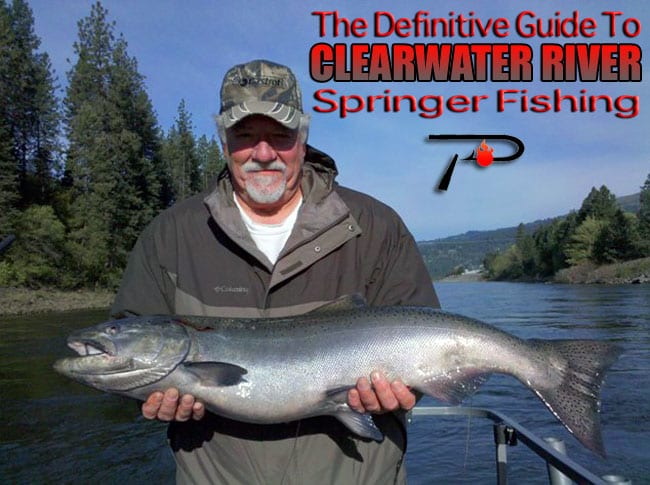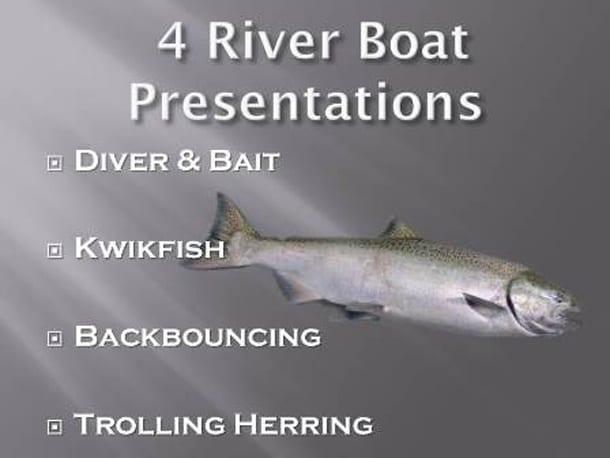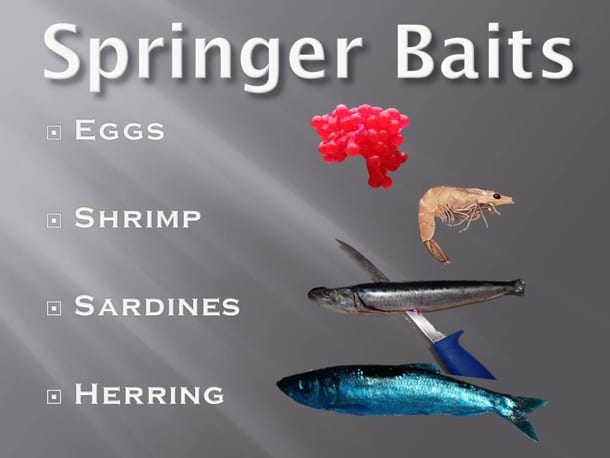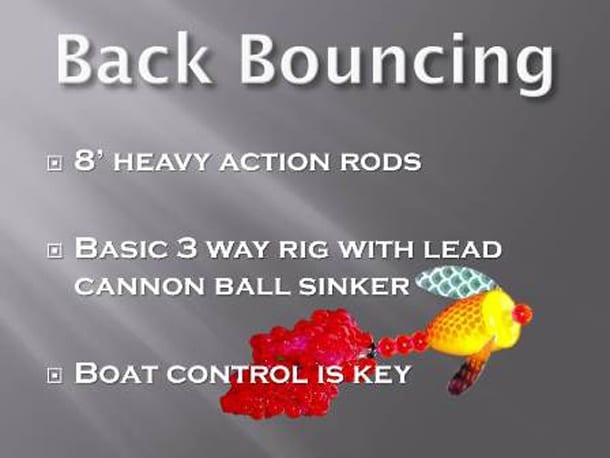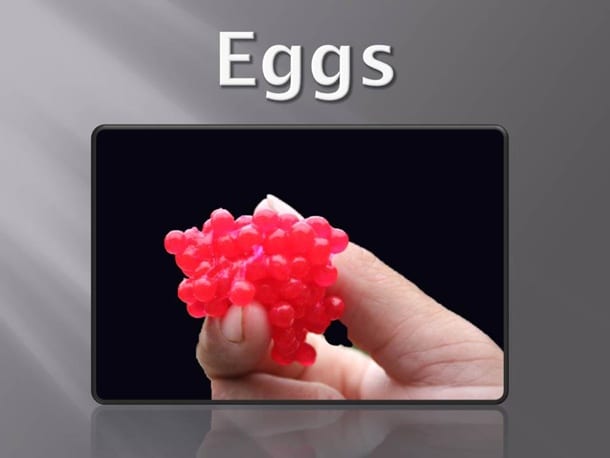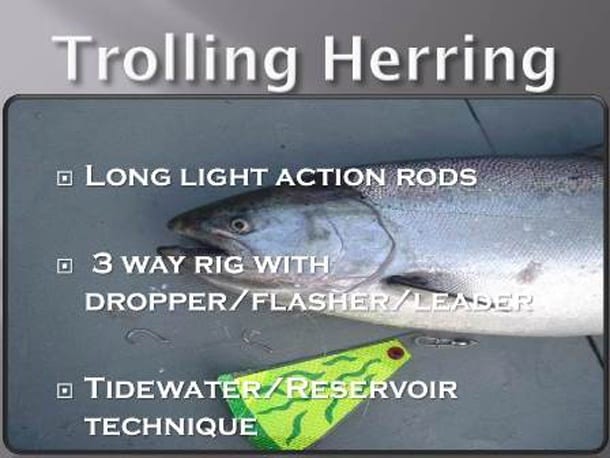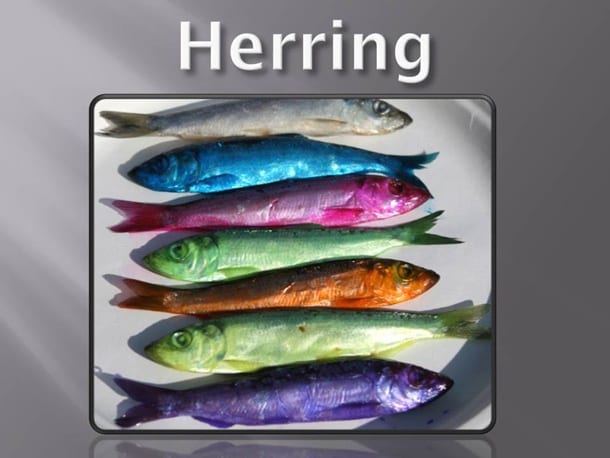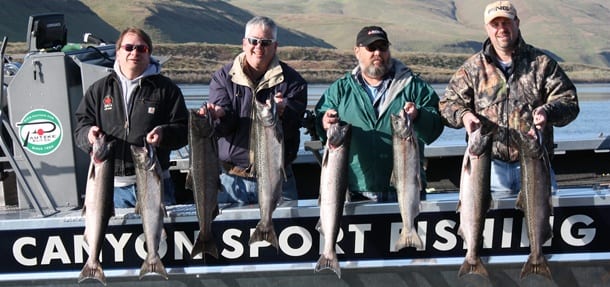Spawn
The Definitive Guide To Clearwater River Springer Fishing
By Jason Schultz | 05/06/2014
As springer counts continue to accelerate over Bonneville Dam, Eastern Washington and Idaho fishermen are chomping at the bit to get in on the action. Here in Lewiston, Idaho, we know we have a special fishery. This is a real river, and a very scenic one at that.
Unlike the pools below in the Snake and Columbia rivers that are backed up by hydroelectric dams, this Clearwater drainage is the first real free flowing piece of water that these upriver springers encounter. Like any real river the Clearwater has many different types of river conditions. Deep and shallow runs, eddy pools and riffle water, super-fast current and dead calm pools. A fisherman taking on a river with conditions so diverse needs to be schooled in many different fishing techniques to be successful. Here is the Hells Canyon Sport Fishing view on river boat fishing techniques for spring Chinook in the Clearwater River.
I have four main techniques for springers in my guide business. These are methods which can be adapted to a back trolling style or fished from an anchored position. Diver and bait, Kwikfish style plugs, back-bouncing bait and trolling/anchoring with herring are my most productive techniques.
My most effective and deadly springer technique is back trolling shrimp, roe or herring behind a diver. I use long 12’ soft action rods with Shimano line counter reels spooled with 50-lb super braid. I feel that a 6-foot long 40-lb Maxima leader works best with a combination of tandem 3/0 hooks on the business end. I tie my leaders this long to get the bait far back behind the diver, which is attached via a three way rigging. A 12-15”dropper line from your 3-way is optimum to get the best performance from the preferred size 50 diver.
Back trolling with Diver and bait works best in straighter runs where current is steady and the depth is 5-20 feet deep. Fish will be traveling on the bottom in a situation like this. I work my baits downstream through current breaks that come off larger points and spots where soft water meets much faster current. These types of spots funnel springers and give a obvious line where fish pushing upstream may be traveling. When a fish starts to take the bait I recommend leaving the rod in the holder until line is ripping off the drag. With this method of fishing the salmon will do a better job of hooking themselves than if you grab your rod and try to set the hook.
Back Trolling Diver and Eggs on the Clearwater
The Kwikfish style lure may well be one of the most popular river salmon lures of all time. Anywhere fishermen seek spring Chinook you will find anglers depending on their trusty “Kwicky” to put meat on the table. Whether fished anchored or back trolled, flat line or with the aid of a diver, more often than not experienced anglers prefer to prepare their plug with a bait wrap for the added scent of real meat!
Sardine, herring, tuna, roe or shrimp can be used, but sardine is the most common bait used with Kwikfish. A strip of bait is cut from a sardine fillet approximately 1½” long and ¾’ wide and applied to the belly of the plug and wound on with stretchy thread. This is all about the scent and curing and scenting your bait can make a difference.
A quick way to cure sardine wraps is to simply salt them and soak them in Pautzke Nectar. Play with different colors. Chartreuse and red are always a great place to start. Kwikfish are not all created equal. Fact is some work well and others won’t. Slight differences in the manufacturing process can make the difference between a plug springers can’t resist and a plug that never gets bit no matter how much you fish it.
Fortunately, there are tricks to tuning these plugs like adjusting the eye screw and bending the belly eye to one side or the other so that the plug runs perfectly strait. In my opinion get rid of problem plugs and ones that don’t get bit as much. It may take a lot of trial and error with lots of different plugs to find the ones that will catch fish consistently. Play with size, color and hook configurations to ultimately come up with the combination that works best for you.
Back-Bouncing
This is my personal favorite way to catch spring run Chinook. Back bouncing is a very “hands on” style of fishing and it takes a little more concentration and feel by the fishermen to be done correctly. Although when done correctly not only is it deadly effective, but also fun. In essence, you rig with an 8-inch 3-way dropper, which is attached to an appropriate sized cannon ball weight. It is used to lower your presentation behind the boat downstream all the way to the bottom. I like a 5-foot, 40-lb leader with an appropriate hook set up to fish eggs, shrimp or herring. The trick is to constantly adjust the amount of line you have out to just barely keep you weight on the bottom.
The fishermen constantly lifts the tip of his rod and the lets it right back down to let the weight bounce its way back down the river as the boat slowly backs it way down through the hole. This can get to be a lot of work, but by using a shorter 8’ heavy action rod it helps a lot on the leverage of lifting the weight over and over again. Most of my clients agree that here is nothing quite like feeling the back bounce bite! When a fish starts to take your bait the fisherman feels every single bump.
If you have never experienced it I am here to tell you it is the best salmon bite ever! Hold your rod still and with little resistance and let the fish pull your rod tip all the way down toward the water. When your line comes tight let em’ have it and watch that rod fold over! Back bouncing works wonders in crazy currents and eddy pools when back trolling is not an option. Be patient when you are trying to learn to fish this way. Boat control is not always easy and fishing can be very frustrating with snags, tangles, ect!
On a low water year the mouth of Clearwater River near Lewiston is backed up by the Snake River Reservoir. With Lower Granite Dam only 35 miles downstream a slow water reservoir situation is created on this last mile of the river. Springers tend to suspend through this section as they migrate up into the free flowing part of the river.
While many anglers anchor in this section of river, if conditions are right trolling herring can be super effective. First off, if the river is high and there is a lot of current don’t mess with this technique. Lower flows and softer current is essential for this style of fishing to work.
I like to use Red Label herring and rig them whole, but cut plug Green Label is by far the most popular. Soak your herring in your favorite color Fire Brine to preserve and color your bait just right. My rig consists of my 12’ rods rigged with a basic 3-way set up. A 4-6 oz cannonball serves to sink the bait and a 6’ long mooching rig holds the herring just right. This rig can be fished with or without a flasher. Most popular are the low drag flashers like the Fish Flash. I like to use the smaller sized Fish Flash 4-feet up the leader from my bait.
Start your run just below the Memorial Bridge and get a nice slow downstream troll started. Lower your gear into the water checking to make sure the herring is spinning like a drill and that so is the Fish Flash. Slow your troll speed until you are moving just fast enough to keep your gear spinning properly, but no faster than that.
Slowly lower your gear until you feel the weight touch bottom then set the brake, the turn in one crank, and put your rod in the holder. Troll speed and the amount of line you have out will determine the depth your gear is fishing. Play with the lower half of the water column in this section of the river when searching for fish. When you get a bite let the springer take the bait until the fish is hooked. Sometimes the fish may tap the bait several times before getting stuck by the hooks. The long light action rods help let the fish “eat” the bait without feeling resistance of the rod until it is too late!
Editor’s Note: Jason’s Schultz owns Hells Canyon Sport Fishing. For more info on his Clearwater River springer trips please visit http://www.hellscanyonsportfishing.com/.







